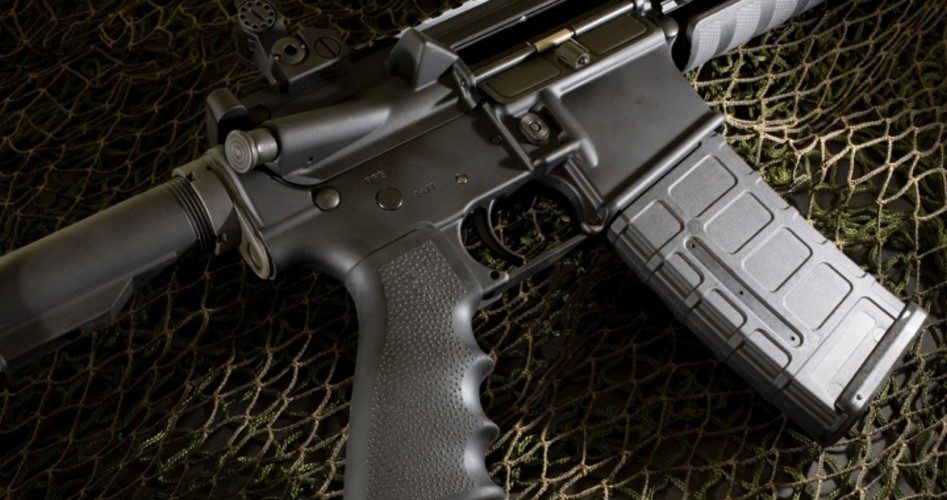
Following the Christchurch mass shootings at two mosques, New Zealand politicians reacted just as the shooter hoped they would. In the manifesto he filed just before beginning his rampage on March 15, the shooter, Brenton Harrison Tarrant, wrote: “I chose [those particular] firearms for the effect it would have on social discourse. The gun owners of New Zealand are a beaten, miserable bunch of baby boomers who have long since given up the fight. When was the last time they won increased rights? Their loss was inevitable. I just accelerated things a bit.”
Indeed, he did. Within weeks, New Zealand’s Prime Minister Jacinda Ardern announced that there would be a mandatory “buyback” of weapons similar to those used by Tarrant, including especially the semi-automatic “military-style” AR-15 rifle. Gun owners owning the now-outlawed firearms have until December 20 to surrender their contraband or face the consequences.
It’s worth noting that the phrase “buyback” implies that the government is offering to repurchase something it previously owned. But the true, legitimate, and, up until now, law-abiding gun owners are the ones who paid their own good money to purchase an estimated 1.5 million weapons, many of them the ones now being targeted by Kiwi anti-gun legislators.
Police had high expectations that those gun owners would roll over, play nice, and sell them to the government, which would use other taxpayers’ monies to buy them. Ardern set aside more than $200 million of other peoples’ money to fund the confiscation.
At a news conference following Ardern’s announcement in April, Deputy Police Commissioner Michael Clement was asked, in light of the fact that law enforcement has little idea (New Zealand doesn’t yet have a gun registry) of who owns the now-offending firearms, how many of those 1.5 million firearms would be voluntarily given up. He answered, “It’s a great unknown question.… Everybody appreciates that there is no register of firearms with regard to the type of firearms we are talking about. So it could be in the tens of thousands. It could be more.”
Or it could be less. Much less. As of July 8, only around 500 of the newly prohibited firearms have been surrendered. As the Washington Post put it, “the government … is faced with a sobering set of challenges over how to enforce the new law.” Paul Clark, the owner of New Zealand Ammunition, one of New Zealand’s largest sellers of ammunition, said he believed that many owners wouldn’t comply, opting instead to keeping them hidden and out of reach from the government. Clark went one step further, declaring that if law enforcement ramped up confiscation efforts, “the only alternative is revolution.” Under pressure, Clark later recanted, apologizing and saying that he wasn’t really calling for violent resistance.
New Zealand’s Council of Licensed Firearms Owners (COLFO) is raising funds to bring legal action against Ardern, but some members have already declared that they will not surrender their firearms. Council spokeswoman Nicole McKee expressed for many their unhappiness over being targeted for the gunman’s rampage: “Why do we have to go through this when a foreign terrorist [Tarrant is Australian] came into this country and committed a crime? The firearms owners are being made scapegoats.”
Gang members have also publicly declared that they will not be giving up their firearms either, claiming they need them for defense against other gangs.
That some of those now-illegal weapons will find their way into the black market — the free market driven underground by government threats of confiscation — was freely admitted by Philippa Yasbek of Gun Control NZ: “These [now-illegal] weapons are unlikely to be confiscated because [law-enforcement officials] don’t know of their existence. These will become black-market weapons if their owners choose not to comply with the law.”
Anti-gun politicians, of whatever stripe or nationality, never seem to learn. When Australia attempted a similar gun “buyback” in 1996, more than 80 percent of the firearms declared to be illegal remain in private hands. Franz Csaszar, professor of criminology at the University of Vienna, wrote that “In Australia it is estimated that only about 20 percent of all banned self-loading rifles have been given up to the authorities.” He put the number remaining in private hands despite the government’s efforts to confiscate them at between two and five million.
Efforts to reduce private ownership of firearms in the United States through “buybacks” have been equally unsuccessful. One of the first efforts at disarming gun owners took place in Baltimore in 1974 when some 13,500 guns were turned in. Not only was it later revealed that most of them were rusty, worthless, and non-functional, but gun violence and assaults actually increased during the two-month buyback program.
Other states have had similarly dismal results following their buyback efforts, including Arizona, California, Maryland, Massachusetts, Michigan, New Jersey, and Washington.
Even more telling perhaps is the decision by Representative Eric Swalwell (D-Calif.) to be the first to withdraw from the Democrat race for the presidency. His campaign, which was built around a mandatory gun buyback program on “military-style” weaponry, just like New Zealand’s, never got off the ground.
Gun “buyback” programs are, on their face, fraudulent. The phrase is a cover for government confiscation of firearms from law-abiding citizens, using shootings such as Tarrant’s in Christchurch, New Zealand, in March as an excuse. They don’t work, they can’t work, they never have worked. Short of turning their country into a concentration camp, anti-gun politicians will be unable to remove firearms from their rightful owners.
An Ivy League graduate and former investment advisor, Bob is a regular contributor to The New American, writing primarily on economics and politics. He can be reached at [email protected].



